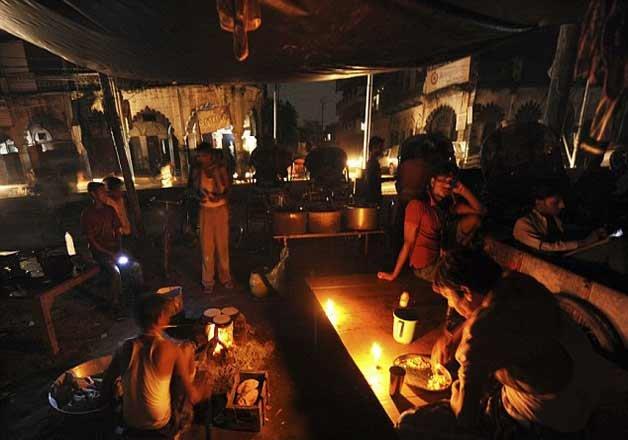Coal Shortages and Power Cuts: Mismanaged Electricity Supplies

Even before we reached peak summer, power cuts started in many states. With power demand reaching 201 GW on 26th April, we had a shortfall of 8.2 GW or 4%. In the peak of summer, the demand is expected to rise to about 220 GW. The current shortfall is not because we do not have enough generating capacity. We currently have an installed capacity of 400 GW, against a peak demand of about half that. However, even with this installed capacity, many states face severe power cuts, ranging from 22.3% in Jharkhand, 19% in Rajasthan, and 16% in Jammu & Kashmir and Ladakh. These load-shedding figures are based on the difference between what the states had computed as their demand and what they have received. They are a little higher than what The Indian Express published on 29 April.
The key reason for the current shortfall is the coal shortage in the power plants. As states and power plants complain about their dangerously low level of stocks, the railways are cancelling passenger trains to prioritise supplying coal to power plants. So the problem is clearly about the logistics of supplies, on which the central government was in denial. With cancellation of passenger trains to accommodate the coal supplies, it is the poor passengers who are suffering. This is the consequence of the gross mismanagement by the government.
Most of our capacity that addresses peaking demand is met from coal, supported by hydro, nuclear, gas and renewable sources. As the power demand increases, more coal is burnt, leading to the stock of coal with the power plants dropping dangerously low, even below 30% of the minimum required inventory. As demand rises during the long, hot summer, before the rains arrive, the crisis in electricity supply will only worsen.
The power crisis that looms was foretold by a similar situation last October, our festival season, when demand had also peaked. Similar to now, the power plants had a low inventory of coal stocks leading to load shedding; or they were buying power from the electricity spot market at exorbitant prices, increasing their losses.
The BJP government is in denial that there is any crisis in coal supplies and, consequently, in the power supply situation in the country. The ongoing shortages in coal and serious power cuts are being explained away either as an outcome of the international situation, the Russia-Ukraine war. Or the now-familiar blame game—the Railways not giving rakes, States not paying for coal, Coal India not supplying enough coal, and so on.
Why—when we know summer peak is the most difficult season for the power sector—was there no prior coordination between the Power Ministry, Railways, and the States? Why is the excuse of a shortage of rakes being trotted out today? Did not the Railways and the Power Ministry compute the number of rakes they would require to supply coal to power plants? Inter-ministerial coordination, robust planning, and dialogue with States as to their power supply and demand situations, in anticipation of a difficult summer, could have averted this situation.
Coal-based power supply is still the mainstay of India’s electricity sector, constituting over 50% of installed capacity and over 70% of current electricity generation. Between 29 March and 24 April, on average, 77% of the peak power demand on any given day was met by coal, 2% by gas-based power plants, 9% by hydropower, and around 10% by other renewable energy sources, mainly wind and solar power plants. Therefore, ensuring that coal-based power plants can run smoothly, without interruption, with a steady supply of coal, especially in summer is a known requirement.
Last summer, the total coal stock (inventory) with power plants was about 60-70% of the prescribed amount. Right now, the stock has dipped to 30-33%. Worse, of 173 coal-based plants, 105 have coal stock below the critical level of 25% of prescribed inventory. What explains this drop, except lack of planning and coordination?
International coal prices have indeed increased sharply. Higher international coal prices impact the import of coal, leading to lower production of power from those plants which depend on imported coal. However, a majority of India’s thermal power plants use domestic coal. Only 8% of the total coal-based power generation is dependent on imported coal. Therefore, while higher imported coal prices can explain some loss of power generation, this is not likely to cause severe power shortages across multiple states. Also, if there is a shortage of rakes to transport coal, as claimed, it points to a severe lack of inter-ministerial coordination. Even this does not explain the low levels of coal stocks in pit head plants, i.e., in thermal power plants located at coal mine sites.
Multiple reports suggest the government has asked States to arrange for expensive imported coal for their plants and blend it with domestic coal up to 10%. In addition, it has indicated that domestic coal supplies to States may be diverted to private generators to increase power generation from plants that are currently idling due to the high cost of imported coal.
First, if private players decided to set up imported coal-based plants in ports and closer to major demand centres, they took the supply risk of imported coal and its price. Asking State utilities to buy imported coal to supply the port-based plants—Adani’s and Tata’s plants—is simply asking States to subsidise private capital. Second, let us understand what the proposal means. It means: i) importing coal, transporting it to inland power stations from ports using the Indian Railways, and ii) diverting coal supplies from mines to port-based plants, again using Indian Railways. How does this solve the problem of shortage of rakes and the inability of the Railways to carry coal from mines to inland power stations?
What would be the extra burden if 10% of imported coal is used by State-owned plants? With the cost of international coal going up about 3-4 times last year, it means, use of 10% imported coal will lead to a 30 to 40 % increase in fuel costs for the State utilities compared with last year. Finally, the States and their consumers would bear the burden of the skyrocketing cost of power production. If the full burden is not passed on to the consumer—through higher electricity charges—State governments would have to shell out a huge part of their revenue to subsidise the private sector’s misadventure of setting up plants using imported coal.
Additionally, there are only a few international coal suppliers who have links to domestic thermal power plants and can step in to import coal. These private coal suppliers can then reap windfall profits from the directive of the central government for States importing up to 10% of coal for their plants.
The other problem of shortfall of electricity supplies is the high spot market price of electricity during the peak demand period. Peak demand is usually during the evening and lasts for a few hours. The States face a Hobson’s choice: either shed load or buy power at exorbitant costs. Currently, some State utilities are buying electricity at Rs. 12 to Rs. 20 per unit and incurring huge losses, while a few electricity traders make windfall profits.
The lack of coal availability for thermal power plants in the last few months is a serious lapse, and has lead to the load shedding we see. Load shedding will severely impact the incomes and livelihoods of people, especially in the MSME sector, which is already reeling under the impact of the pandemic. On the other hand, the purchase of expensive power, either from the spot market or from existing coal plants using imported coal, will only increase electricity prices and hurt the domestic industry and private consumers.
We need to understand that it is the basic ideology of power sector reforms that has led to a situation where even with an installed capacity of 400 GW, we are unable to meet a peak demand of only half of that. All so-called market reforms have been at the expense of the people who consume electricity and the States who have the responsibility to supply electricity while generating very little
Get the latest reports & analysis with people's perspective on Protests, movements & deep analytical videos, discussions of the current affairs in your Telegram app. Subscribe to NewsClick's Telegram channel & get Real-Time updates on stories, as they get published on our website.
























